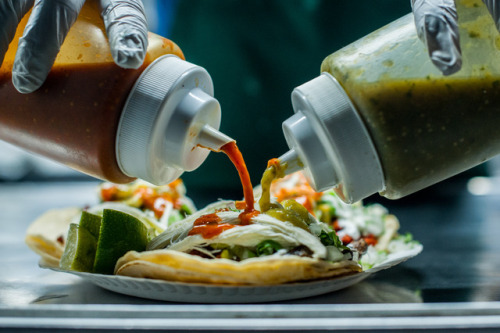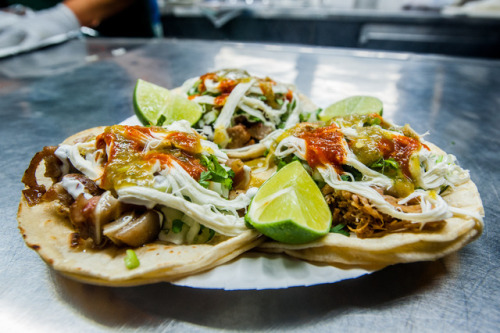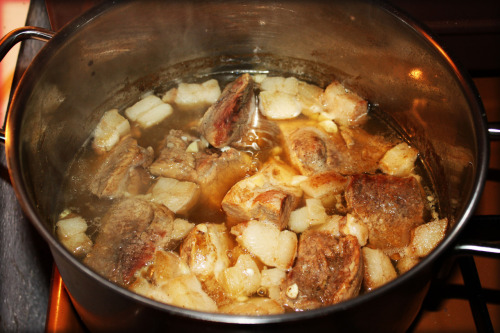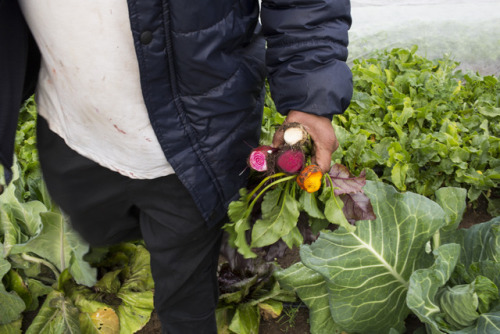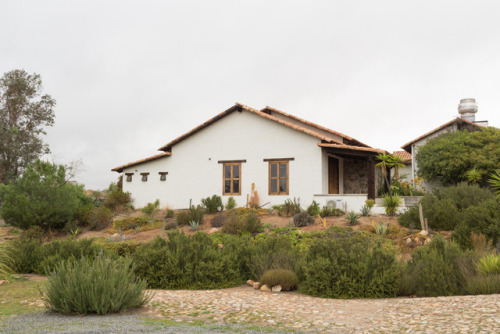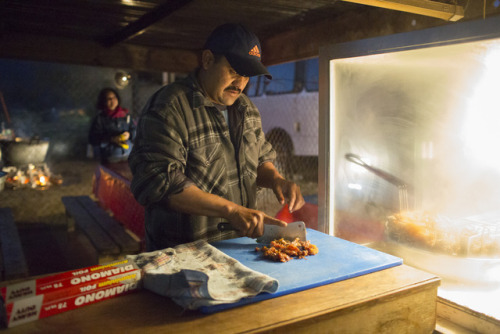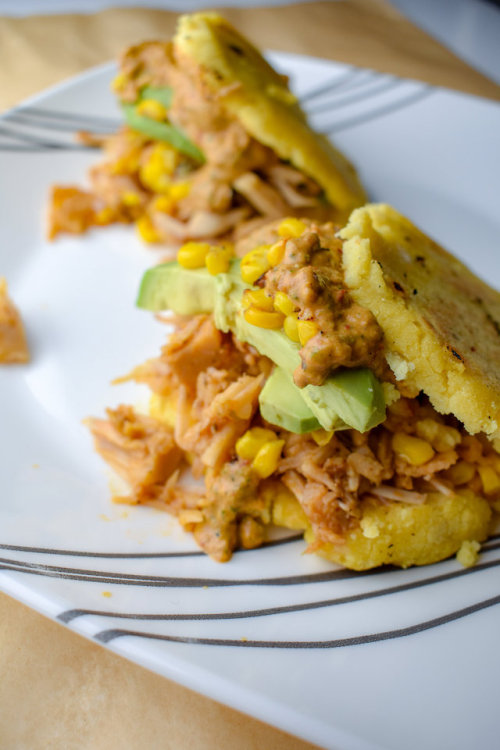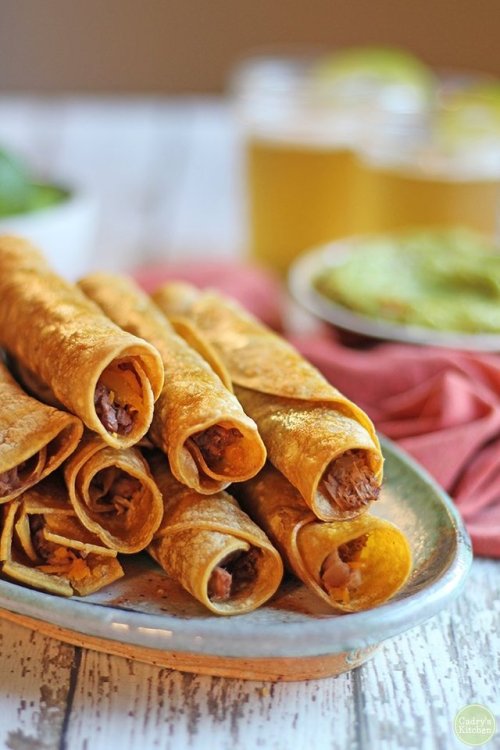#carnitas
“Marina I’m Drunk” My interview with my favorite NYC taco truck! http://www.madebynashish.com/marina-im-drunk
Post link
Sir Sebastian the Fat was very interested in these crispy shelled tacos. Don’t worry, he was able to sample a few bites of the slow cooker carnitas.
#tacos #carnitas #ketotacos #ketogenic #ketosis #ketoaf #lowcarbtacos #lowcarb #lowcarbfood #lowcarbdinner #ketodinner #lchf #lchftacos #lchffood #cat #fatcatsofinstagram #fatcats
https://www.instagram.com/p/ByUDgL9AerB/?igshid=3ffnxppvc3bh
Post link
CARNITAS TACOS (PULLED PORK)
Adapted only a tiny bit from Smitten Kitchen
We often buy already cooked pulled pork here, but last night A decided to try making his own. This wasn’t an easy endeavor, since we don’t have a slow cooker or even a crock pot. But wow, fancy tools don’t matter when you have delicious meat and spices. This was super delicious, compounded by the fact that we made our own tortillas and a delicious slaw.
Ingredients:
3 pounds boneless pork shoulder or pork butt, cut into 2-inch cubes
½ cup orange juice
¼ cup lime juice (from about 2 to 3 limes)
4 cloves garlic, peeled and crushed
1 teaspoon ground cumin
1 teaspoon Kosher salt, plus more to taste
Corn tortillas, for serving
Avocado slices, chopped cilantro and slaw
Directions:
1. Place the pork in a large Dutch oven or heavy pot. Add the orange juice, lime juice, garlic, cumin, salt and enough water to just barely cover the meat. Bring the pot to a boil and then reduce the heat to a simmer. Simmer uncovered for two hours. Don’t touch the meat. Seriously, don’t touch it!
2. After two hours, increase the heat to medium-high and while occasionally stirring and turning the pieces, continue to cook for about 45 minutes, or until all of the liquid has evaporated, leaving only the rendered pork fat. Let it sizzle in this fat long enough to brown at the edges, turning pieces gently, only as needed.
3. When pork has browned on both sides, it’s ready. Adjust seasonings to taste and serve on tortillas with slaw.
Post link
Restaurante Laja and Roadside Carnitas
Location: Baja, Mexico
I didn’t realize it at the time, but my first hour in Baja would come to represent much of my unfolding trip. I drove across the border at Tijuana, and within an hour, I had arrived at the pin on my map where Bichi vineyards were purported to be, but alas, there was no sign of an entrance. Of course, cell service had long since vanished. Massive trucks zoomed by, making every U-turn more unnerving than the last. Just as I was contemplating crossing back into California with my tail between my legs, Noel, the co-owner of the winery, came flying in to show me down the camouflaged road. “Was it so difficult to find?” he asked. When I looked at him incredulously, he replied, “Good.” In this part of Mexico, the best things are hidden in plain sight.
I arrived at Bichi, Baja’s only natural winery, in the midst of a vineyard staff Christmas party. I was meeting up with my friend, chef and mezcal producer Niki Nakazawa, who had just finished touring the country’s best palanqués (mezcal facilities) with the team from Noma Mexico. I found her seated at a long table at the base of the vines, surrounded by the families who make this operation tick. They were drinking the funkiest organic wines and reheating Domino’s pizza over a wood-burning stove. Isn’t this exactly the way beautiful wine should be consumed? The bottles Noel was pouring were made in collaboration with his mother and brother, chef Jair Téllez, who was off in Mexico City running his award-winning restaurant, MeroToro.
Bichi has been enjoying a moment of recognition, as the U.S. consumer warms up to the more complex, unpredictable palate of naturally produced wines. While American wine lovers are just getting hip to the idea that there is indeed a vibrant wine region south of the border, for the Téllez family, Ensenada has always been the gustatory capital of the world. They were born and raised here, and this is where Jair made his mark in the restaurant industry with Laja, Mexico’s first farm-to-table restaurant, located just an hour south of the winery. That would be our next stop.
Housed in a stand-alone Spanish-style hacienda, the restaurant is surrounded by sprawling organic gardens that provide 100 percent of the produce for the kitchen. There is nothing of this sort for many miles, so anyone who has eaten here has made the journey for that reason alone. After spending the day with Laja’s chef Rafa Magaña and his brother Maro Magaña, the restaurant’s organic gardener, I got the sense that this remove was, again, very intentional. For the people who work here, this is a way of life, a family and a mission, rather than a means to food-world stardom or notoriety.
I wanted to taste their famous food and visit the grounds where they grow nearly every ingredient we ate that day. What I didn’t expect was the marathon of cookery and culinary backflips that ensued. First, we picked the veggies with Maro under misty skies — monster parsnips, beets and bushels of salad greens that were even more vibrant against the gray of the day.
Back in the kitchen, Rafa was already scheming, enlisting his full staff to create a rolling meal for two. I watched closely and tried to take notes as he diced parsnip and browned it, picked herbs and gingerly prepared the most tender baby vegetables. I was ready to eat standing up in the kitchen, but Rafa wanted us to have the full experience and sent us into the dining room. When the waiter arrived, those parsnips had been transformed into a silky parsnip purée, spread over a crunchy seaweed based tostada, topped with a quick stir fry of fresh, thinly cut veggies. I would have happily made that my meal, but this was only the first course.
Having devoured the most delicious tostada of my entire life (and I have eaten a lot of tostadas), I expected Rafa to pack up. I was very, very wrong — we were in it for the long haul. There was a salad of baby lettuces and butter-poached Japanese turnips. There was fish caught that morning, perfectly seared, served with the simplest presentation of charred garden vegetables. My personal favorite, a dish I still think about regularly, was poached eggplant in tomato jus, topped with fennel fronds and microgreens.
Hours (and countless glasses of wine) later, Rafa finally hung up his apron and joined us. When he first showed up at Laja looking for a job, he was just a kid looking for menial job to pay the bills. Back then, Jair was the chef de cuisine. While Rafa is quick to attribute everything he knows to Jair, he clearly has an intuition all his own. He rose from kitchen assistant to sous chef, and eventually chef de cuisine when Jair went on to Mexico City to open his next enterprise. There were no recipes involved in Rafa’s culinary education because he never learned to read or write. Instead, he learned by trusting his senses — watching, tasting and smelling. We were witness to his laser beam focus. There was no script required.
When it all seemed to be coming to an end, Maro must have seen our faces drop. He was quick to up the ante with the next adventure. “Te quiero carnitas?” he asked. Clearly a rhetorical question, he handed us a piece of scrap paper with a handwritten map and an X at the anonymous intersection where we were to meet him at 2 a.m. We were going to see the other side of the family business, a roadside carnitas stand passed down to Maro from his father who had perfected the art for 12 years before him. Fine dining might be relatively new to the Magaña family, but Maro tells me, “My father taught us how to make birría, carnitas, barbacoa, consume, menudo — traditional Mexican food. Food that people like.”
Post link



